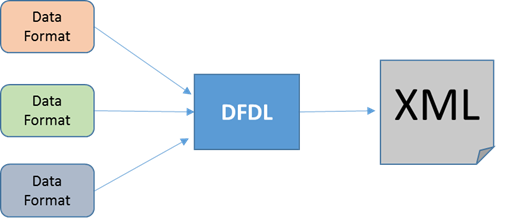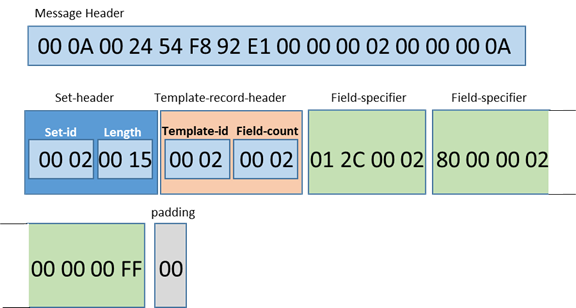Hi Folks,
DFDL [1] is a very cool standard for converting any data format – text or binary – to XML.
Want to convert a (text) CSV file to XML? Use DFDL.
Want to convert a (binary) JPEG file to XML? Use DFDL.

For example, I used DFDL to convert a binary data format called IPFIX [2] to XML. I converted the following binary (shown in hex) to XML.
00 0A 00 24 54 F8 92 E1 00 00 00 02 00 00 00 0A
00 02 00 15 00 02 00 02 01 2C 00 02 80 00 00 02
00 00 00 FF 00
That binary has this meaning:

I ran the binary through a DFDL parser and … bam! … out pops this XML:
<IPFIX>
<Message-header>
<Version-number>10</Version-number>
<Length>36</Length>
<Export-time>1425576673</Export-time>
<Sequence-number>2</Sequence-number>
<Observation-domain-id>10</Observation-domain-id>
</Message-header>
<Set>
<Template-Set>
<Template-Set-header>
<Set-id>2</Set-id>
<Length>21</Length>
</Template-Set-header>
<Template-Records>
<Template-record>
<Template-record-header>
<Template-id>2</Template-id>
<Field-count>2</Field-count>
</Template-record-header>
<Field-specifier>
<Enterprise-bit>0</Enterprise-bit>
<Information-element-identifier>300</Information-element-identifier>
<Field-length>2</Field-length>
</Field-specifier>
<Field-specifier>
<Enterprise-bit>1</Enterprise-bit>
<Information-element-identifier>0</Information-element-identifier>
<Field-length>2</Field-length>
<Enterprise-number>255</Enterprise-number>
</Field-specifier>
</Template-record>
<Padding>0</Padding>
</Template-Records>
</Template-Set>
</Set>
</IPFIX>
Awesome!
/Roger
[1] DFDL = Data Format Description Language. More info at:
http://www.ogf.org/dfdl
[2] IPFIX = IP Flow Information Export. More info at:
https://tools.ietf.org/html/rfc7011

